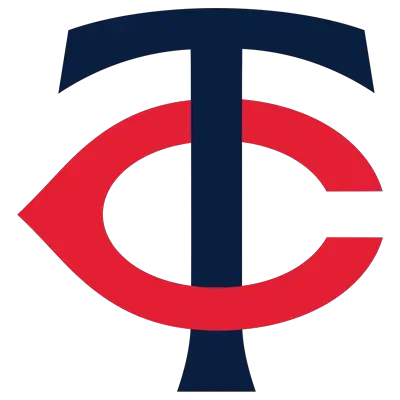Kansas City Chiefs vs. Seattle Seahawks Prediction & Top Bets (August 15, 2025)
It’s football season (ok, it’s preseason, but it still counts), and week two sees the Kansas City Chiefs playing the Seattle Seahawks under the Friday night lights at Lumen Field in Seattle.
The first week, the Chiefs lost to the Arizona Cardinals, but Kansas City’s emerging players? They had a strong outing that hinted at the impact they could have once the regular season kicks off.
Seattle tied 23-23 with the Raiders in their first preseason game, so it’s not a loss, but it’s not a win, either.
Could this game show us if Sam Darnold, the new starting QB for the Seahawks, is worth the $100.5 million contract? Is Patrick Mahomes gonna play for more than a minute in this game?
Maybe both of these questions will be answered by the end of this game! In the meantime, we’ve got all you need to know in our preview: betting odds, angles, storylines we’re watching, rosters, who’s injured, and our picks for the best bets!
Game Details & Context Overview
- Matchup: Kansas City Chiefs vs. Seattle Seahawks
- Game Details: Friday, August 15, at 10:00 pm ET
- Location: Lumen Field, Seattle, WA
- How To Watch: NFL Network / NFL Net
- Preseason Stakes: Both teams want to get some preseason traction and see how their players do; they’ll also use the game to iron out bubble and roster choices
Live Betting Odds Snapshot
Are you ready to bet on some football? If so, here are the latest odds and lines posted on ESPN BET:
| Team | Spread | Moneyline | Total |
|---|---|---|---|
Chiefs | +3 (-115) | +130 | Over 39.5 (-110) |
Seahawks | -3 (-105) | -150 | Under 39.5 (-110) |
Storylines & Betting Angles
Both teams treated their preseason openers like they were auditions for the final roster. Andy Reid put in Mahomes for a minute before turning it over to the backups. The Seahawks’ QB Sam Darnold will probably get another short stint before the backups take over.
QB Rotation & Evaluation Mode
- Like we said, there’ll probably be another cameo by Mahomes to start the game, and then the backups like Gardner Minshew or Bailey Zappe will take over. However, there is now talk that Andy Reid may not have Mahomes play at all. This is something to keep an eye on.
- Seattle is likely to follow the same playbook: Darnold starts, followed by Drew Lock or Jalen Milroe.
- Preseason games feature safe schemes to preserve depth cards for the regular season.
Rising Stars & Roster Battles
- George Holani (61 rush yds, 1 TD) and Tory Horton (3 rec, TD) delivered in Week 1 and are early favorites for the regular roster roles.
- Seattle is getting fresh looks in new offensive roles; rookie fullback Robbie Ouzts is getting a lot of attention, and Horton is emerging as a standout.
- KC’s camp buzz spotlights Brashard Smith outperforming Elijah Mitchell, and competition is heating up among CBs like Joshua Williams.
Head-to-Head & Preseason Trends
- Seattle is 6–1 straight up at home against Kansas City in recent matchups.
- Preseason game totals at Seattle have gone under in 10 of the last 15, and KC is 2–5 ATS over its past seven preseason games.
Weather / Venue Effects
- Forecast for August 15 in Seattle: Daytime highs near the mid‑70s, with light winds from WNW at 5–10 mph; no rain is expected.
- Good weather conditions at Lumen Field should not affect passing or kicking, but mid‑range decision-making may still favor ground or controlled plays.
Roster & Injury Watch
Who’s playing and who’s on the injured list?

Chiefs: Questionable & Hurt
- Marquise “Hollywood” Brown (WR – ankle/foot): Brown’s been out since July 29 with an ankle/foot injury, but has started running in rehab. Andy Reid says he’s “close” to a full return, though he’s unlikely to suit up for the second preseason game.
- Jaylen Watson (CB – concussion): Watson is in concussion protocol following a hit in the preseason opener. He’s officially listed as questionable.
- Rashee Rice (WR – groin): Rice missed practice with a groin injury but returned to the field recently. He’s also marked as questionable.
- Janarius Robinson (DE – fractured foot): Robinson was sidelined due to a fractured foot suffered in practice. The Chiefs signed DE Nate Matlack in response.

Seahawks: Questionable & Roster Adjustments
- Tyrice Knight (LB – knee + medical issue): Knight is expected to sit out for a few weeks. To cover, Seattle added Alphonzo Tuputala, who’s a local UDFA.
- Steven Sims (WR/PR – hamstring unspecified): Sims is listed as questionable with a hamstring issue. Details are scarce, but his return role could be impacted.
- Olu Oluwatimi (C – back tightness): Dealing with back tightness, Oluwatimi is questionable, although he’s expected to remain day‑by‑day, and the coach indicated that it’s not a serious injury.
Our Best Bets
Where do we see the value for this preseason game? We’re eyeing up three angles and a decent prop!
Over 39.5 – Recommendation: OVER 39.5 (-110)
Our Confidence Level: Moderate–High
Why Do We Like It?
When the top defenders head to the sideline, coverage breakdowns and missed tackles happen, just like it did for both squads in Week 1 once the rotations got deep. Kansas City and Seattle each have enough capable arms and skilled players in the backup ranks to keep the scoreboard moving, even without complicated playbooks.
Spread – Recommendation: Chiefs +3 (-115)
Our Confidence Level: Medium
Why Do We Like It?
Kansas City’s reserve quarterbacks and receivers executed more cleanly in their opener and in camp work. Against Seattle’s simplified defensive looks, that should translate to a small but tangible edge to cover a short spread.
Moneyline – Recommendation: Chiefs (+130)
Our Confidence Level: Low–Medium
Why Do We Like It?
If the Chiefs make the most of their limited starter reps and avoid turnovers with the backups? The straight-up route is a reasonable way to back them without worrying about a narrow margin
Alternate Spread / Prop Angle
For a high-risk, high-reward option, an alt line like Chiefs –14.5 at +485 hinges on the reserves pulling away late. It’s not a primary play, but it’s the kind of preseason change that’s worth a small stake if you think one side’s depth will take over!
Why These Picks Work
- OVER 39.5: Simplified defensive schemes plus deeper rotations can lead to second-half scoring surges, which is a familiar preseason pattern.
- Chiefs +3: Kansas City’s structure and QB depth give them an advantage in limited starter reps; Seattle is without some key offensive pieces like Metcalf and Lockett, and that affects timing and continuity.
- Bonus Angle: For bigger payouts, an alternate spread like the Chiefs –14.5 at +485 is high variance, but it’s worth a small play if you expect the backups to pull away in the final quarter.
What This Game Means for Week 2
Kansas City’s first group is positioned to put points on the board in its initial series before turning things over to a backup unit that’s proven it can sustain scoring drives. Seattle’s reserves have some upside, but their offensive timing has been less consistent, which could make it difficult to close the margin once the second quarter is underway.
Best Bets Recap
- OVER 39.5: Confidence: Moderate–High
- Chiefs +3: Confidence: Medium
- Chiefs ML: Confidence: Low–Medium
- Alternate Spread: Chiefs –14.5 (+485): Confidence: Speculative / Small stake only
Why We’re Confident
Kansas City’s reserve QBs have shown they can finish drives against second-string defenses, and their skill depth has been winning one-on-one matchups in camp. Seattle is sitting core receivers, which makes their passing game more predictable once rotations kick in. The combination points toward KC having the better scoring chances across all four quarters.
Cautionary Note
Preseason games turn on things you can’t always handicap, like a busted coverage, a fourth-quarter punt return, or a sudden change in who’s under center. Treat the plays as part of a limited preseason portfolio, not a full-unit investment!
Don’t forget to check the updated odds or live betting markets before kickoff, and you can do that at one of our recommended online betting sites.
Final Score Prediction: Kansas City Chiefs 24 – Seattle Seahawks 20
We’re going with the Chiefs for this one! KC’s starters will get a lead early, and the backups will hold off Seattle if they make a late push.
Las Vegas Aces vs. Phoenix Mercury Preview & Prediction (August 15, 2025)
The Las Vegas Aces have been on a heater, winning five in a row! Next up, they head to Phoenix to play the Mercury, who want to end that streak and take one on home court.
Tip-off is at 10 pm at the Footprint Center in Arizona, and playoff position is at stake for both WNBA teams; there are only a few weeks left in the regular season.
Who are we backing? Keep reading to find out what the latest betting odds say, recent team forms, trends, who’s playing, who’s injured, and our picks for the three best bets!
Matchup Details
- Game Details: Friday, August 15, 10:00 pm ET
- Location: Footprint Center, Phoenix, AZ
- Team Records: Las Vegas Aces: 19–14 (8–9 road); Phoenix Mercury: 19–12 (11–4 home)
- Season Standings & Stakes: Locked in a race for the 3rd or 4th seed and home-court advantage.
- Win Probability (ESPN Analytics): Phoenix, 50.5%, Las Vegas, 49.5%
Recent Form & Trends
The Aces have been going up in the standings and are killing it on the road, and Phoenix’s defense is stellar; they’re still competitive even though they haven’t been winning every game.

Las Vegas Aces
- The Aces are 7–3 in their last 10 games, and have a three-game road win streak.
- They’re averaging 84.7 points per game on 43.3% shooting.
- Their defense has been really active, generating 7.8 steals and 4.6 blocks per game.
- Bench players have delivered more scoring, and late-game shot selection has been super disciplined.

Phoenix Mercury
- The Mercury are 4–6 in their last 10 games, and they have an average scoring margin of –2.1 points.
- They are allowing only 79.5 points per game, which ranks them third in the WNBA.
- Opponents are shooting only 42.1% from the field against them, as they regularly force low-percentage looks.
- Phoenix is always a good opponent when they’re on home court; they’ve won 11 of 15 games on their hardwood this season.
Head-to-Head in 2025
What do H2H records look like for these two?
- Last matchup: Las Vegas won 84–81 on June 29.
- A’ja Wilson posted 26 points, 18 rebounds, and 7 assists in that game.
- Last five meetings: Aces are ahead 4–1.
Betting Odds
Ready to place your wagers? Before you do, check out the latest odds and lines from FanDuel:
| Team | Spread | Moneyline | Total |
|---|---|---|---|
Aces | +4.5 (-110) | +160 | Over 168.5 (-112) |
Mercury | -4.5 (-110) | -200 | Under 168.5 (-108) |
Heads-up: Betting lines often change as tip-off approaches, so double-check the latest odds before you place your wager to make sure you’re getting the best value.
Market Notes
- Sportsbooks have Phoenix as the slight favorite in this game; they’re leaning on their home record and the Aces being short-handed in the frontcourt without Parker-Tyus.
- The total is set in the mid-160s, which is in line with the league average and both teams’ recent scoring trends.
Injury Report & Main Players
Who’s sitting this one out, and who’s hitting the floor?
Injuries
- Aces: Cheyenne Parker-Tyus is out (personal), and that decreases their frontcourt depth and rim protection.
- Mercury: No major injuries are reporte,d and a full rotation is expected.
Players to Watch
Here’s the lowdown on the players you should be watching!
Las Vegas Aces
- A’ja Wilson: She’s the MVP candidate who is averaging 22.0 points, 9.8 rebounds, and 2.1 blocks per game; a pretty impossible cover for any defense.
- Kelsey Plum: She’s a really aggressive driver who can change the momentum of a game with transition scoring.
- Chelsea Gray: A veteran point guard who controls tempo and creates quality looks for her teammates.
Phoenix Mercury
- Kahleah Copper: She puts up over 17 points per game and brings energy at both ends of the court.
- Alyssa Thomas: An all-around contributor who rebounds, facilitates, and defends at a high level.
- Diana Taurasi: She’s a constant threat in big moments despite having a lower shooting percentage this season.
Our Best Bets
And here’s what we are looking at for the three best bets according to the market data and recent trends:
| Bet | Confidence Level | Why Do We Like It? |
|---|---|---|
Mercury -200 | ★★★☆☆ (3/5) | The Mercury have strong defensive numbers at home and have some extra motivation after losing to Las Vegas last time. |
Aces +4.5 (-110) | ★★½☆☆ (2.5/5) | The market tilts toward Phoenix, and that creates value on Las Vegas, which is coming in on a winning run. |
Under 168.5 (-108) | ★★★☆☆ (3/5) | Both teams defend really well, and Phoenix is likely to slow down the scoring pace. |
Optional Prop Bets to Consider
Want a couple of extra angles? We got you!
- A’ja Wilson Over 21.5 Points: Wilson should get more scoring chances with Parker-Tyus being unavailable.
- Total Assists Under 37.5 Combined: Expect to see fewer assist chances and a more deliberate playing style.
The Final Whistle Forecast: Aces or Mercury?
Final Score Prediction: Phoenix Mercury 82, Las Vegas Aces 77
Phoenix and Las Vegas are neck-and-neck in the WNBA standings, and this game has playoff implications!
We are backing the Mercury, as its interior defense and solid record at home give them a small advantage, but Las Vegas has been in form lately, and they will not make it an easy win by any means.
If the Mercury force low-quality looks and keep the game centered around the basket, scoring could drop, so we like the Under 166.5 the best, and there’s some decent action on the Mercury moneyline and a couple of targeted props in play!
Best Bets Recap
- Phoenix Mercury ML ★★★☆☆
- Aces +4.5 ★★½☆☆
- Under 168.5 ★★★☆☆
Want to bet smarter? Learn key sports betting strategies to make informed picks, manage risk, and find value. When you’re ready, visit our best sportsbooks page for trusted platforms with great odds and fast payouts.
Philadelphia Phillies vs. Washington Nationals Prediction & Top Bets (August 14, 2025)
The Phillies are on the road again after getting whooped by the Reds in Ohio (sorry, there’s no nice way to say that). They’re headed to DC to play the Nationals, and here’s hoping they don’t get blown out 0-8.
It’ll be a 4-game series, and the Phillies come in at 69–51, Washington is sitting at 48–72, and they continue to drop in the NL East standings.
Jesús Luzardo gets the nod for Philly, and he’s backed by a stronger lineup and bullpen. Brad Lord will face a team that has already tagged him once this season. There are playoff stakes in play and a more complete roster, so Philadelphia has the edge going into Game 1.
We’ve got all you need to know before the first game in the series, so keep reading for starting pitcher stats, the current betting odds, team form, trends, and our picks for the best bets and why we chose them!
Game Details
- Matchup: Philadelphia Phillies (69-51) vs. Washington Nationals (48-72)
- Date & Time: Thursday, August 14, at 6:45 pm ET
- Location: Nationals Park, Washington, D.C.
- Weather Forecast: The forecast calls for clear skies, temps in the low 80s, and a little bit of wind blowing out to the left, and that’s good news for lefty hitters like Schwarber
- Broadcast: MASN (Nationals), NBC Sports Philadelphia (Phillies)
- Streaming: Available on MLB.tv with a subscription
Pitching Breakdown
The Phils are sending our southpaw Jesús Luzardo to start, and the Nats will counter with righty Brad Lord. Here’s how the two pitchers compare:

Jesús Luzardo (PHI – LHP):
- Record: 11–5 | ERA: 4.20 | WHIP: 1.35
- Strikeouts: 151 Ks in 133.2 IP
- Last Start: 6 IP, 1 ER, 7 Ks vs. Texas (Aug. 9)
- Matchup Note: Luzardo handles right-handed-heavy lineups effectively; Washington doesn’t have a lot of left-handed power to challenge him here

Brad Lord (WSH – RHP)
- Record: 3–6 | ERA: 3.28 | WHIP: 1.21
- Strikeouts: 70 Ks in 85 IP
- Scouting Note: Lord starts games with a pretty decent command, but deeper into outings? Patient lineups push his pitch count and begin getting clean contact
- Previous Start vs PHI: 5 IP, 4 ER
Betting Odds & Market Snapshot
How’s the market looking for this game? Here’s what FanDuel has posted for the odds and lines:
| Bet Type | Phillies | Nationals |
|---|---|---|
Moneyline | -215 | +180 |
Run Line | -1.5 (-137) | +1.5 (+114) |
Total | Over 8.5 (-122) | Under 8.5 (+100) |
Market insight
- Heavy Action on Phillies: The public is heavily backing Philadelphia on both the moneyline and run line.
- Total Trending Down: Sharper bettors are leaning Under 8, which points to each starter’s recent outings and slightly cooler temps being projected at first pitch.
- Run Line Success: The Phillies have covered the run line in 7 of their last 9 wins.
Team Form & Trends
How have the Phillies and the Nationals been playing recently? And are there any notable trends? We’ve got the deets:

Philadelphia Phillies
- 7–3 in their last 10, and 4–1 against the Nats this year
- They’ve won 4 of 5 against Washington this season
- Bullpen ERA ranks top 5 in the league since the All-Star break
- Harper, Schwarber, and Turner have all raised their batting averages over the last two weeks and are squaring the ball up more often

Washington Nationals
- Only 3 wins in their last 10, and there’s been inconsistent production across the lineup
- James Wood (25 HR) and CJ Abrams have had good stretches, but the rest of the lineup? Not so much
- Batting under .240 as a team across the last 15 games
- Bullpen ERA sits in the bottom-6 across MLB in August
Historical Edge
- The Phillies have won 14 of the last 17 matchups against the Nationals
Our Best Bets
We’ve got your best bets! Look below for where we feel like the most value is; there are three that look pretty good, as well as a prop angle!
| Bet | Confidence Level | Why Do We Like It? |
|---|---|---|
Phillies -215 | ⭐⭐⭐⭐ (4/5) | Luzardo has the stronger pitch arsenal, and the Phillies’ order and bullpen give them the advantage. |
Phillies –1.5 (-137) | ⭐⭐⭐ (3/5) | Philadelphia has won by multiple runs in 7 of its last 9 wins, and matchups favor them. |
Under 8.5 (+100) | ⭐⭐ (2/5) | Luzardo neutralizes righties, and Lord has held his own in tough spots; cooler temps will also help here. |
Kyle Schwarber HR (+280) | ⭐⭐⭐ (3/5) | Schwarber faces a righty in a hitter-friendly setup and has a strong track record in this setting. |
Best Bets Breakdown
- Phillies ML: Philadelphia has the advantage in all areas: starter, bullpen, and lineup. Luzardo’s strikeout upside and the late-inning relief options make this worth the price.
- Phillies –1.5: If the offense connects early, there’s a clear path to a multi-run win. Washington just doesn’t have the arms to hold the line late in a game.
- Under 8: Cooler conditions and strike-throwing starters could limit early scoring. If both avoid free passes? The total stays in check.
- Kyle Schwarber HR: This is a good hitting environment, a favorable matchup, and there’s a righty starter with limited MLB experience. Schwarber can send one out with a lifted fastball.
The Phillies are Primed to Win
Final Score Prediction: Phillies 5, Nationals 2
As long as the Phillies don’t play like they did against the Reds, they should be good to win Game 1 in the opener of this series against the Nats.
Why? They have a big advantage in power, pitching, and they want to make it to the playoffs. Washington does have some really solid rookie talent, but it won’t be enough to make a dent in Philly’s lineup.
Luzardo will start off strong, and Schwarber will do what he does: hit the cr*p outta the ball. We are backing the Phillies for this one, and the best value is going with the Phillies ML and Run Line!
Best Bets Recap
- Phillies –215: ⭐⭐⭐⭐
- Phillies –1.5 (-137): ⭐⭐⭐
- Under 8.5 (+100): ⭐⭐
- Kyle Schwarber to Hit a Home Run (+280): ⭐⭐⭐
How to Analyze Team and Player Trends for Betting Success
Sports betting gets a whole lot smarter when you aren’t just making guesses (even if they are educated ones) and start focusing on patterns. Team and player trends usually reveal a treasure trove of info that isn’t obvious at first glance—details that can make a really big difference when you are placing a bet.
Yes, it sounds research-intensive and a little nerdy, but when you really examine the habits and history of teams or individual athletes? Hoo boy, you can see performance patterns, inconsistencies, or even streaks that will give you the upper hand! It could be a team that always struggles when they are away from home or a star player who performs differently in high-pressure situations—these are all trends that can up your confidence when you are betting.
Want to know how to analyze trends, the tools that will streamline the process, and some practical strategies that you can use right now? We got you! Our guide is your definitive roadmap to betting success, from basketball to football and everything sport in between.
Why Analyzing Trends Is Crucial in Sports Betting
Trends will always tell a deeper story than scores or stats alone can give you—they are one of the main ways to bet smarter!
Patterns That Impact Results
Team and player trends will always reveal a bit more about what’s below the surface. A basketball team could consistently lose on the road, or a quarterback might have struggle sessions against certain defensive setups. Recognizing these kinds of patterns means that you’ll be able to make decisions that are actually backed up by evidence!
Short-Term vs. Long-Term Insights
Breaking up the trends into two categories is the easiest way to clarify their relevance:
- Short-term insights include recent performance, injuries, or streaks—things that directly influence the next game.
- Long-term habits encompass any season-wide tendencies, home and away differences, or rivalry results—factors that show consistency over time.
As an example, a soccer team may be undefeated at home for two years. This is the type of pattern that shows more stability than a single winning streak, which could merely reflect favorable recent circumstances.
Types of Trends to Analyze
But what trends should you be studying? Good question! Understanding which ones to examine is the basis of any decent betting strategy. Yes, stats are a lot of numbers and can get overwhelming, but breaking them into team-focused and player-focused categories makes things way more manageable. Next, we’ll look at the main trends you should be analyzing!
Team Trends
When you are looking at team trends, you should concentrate on any patterns that show how a group performs under different conditions. The following are some of the most impactful metrics:
- Home vs. Away Performance: Some teams show insane differences when they’re playing at home versus when they are on the road. Factors like crowd support, travel fatigue, or unfamiliar environments can heavily influence performance results.
- Historical Performance Against Specific Opponents: Some teams will consistently outperform or struggle against particular rivals. The historical matchups can indicate if a team has a tactical advantage or a psychological edge.

- Form Over Recent Games: Analyzing the last 5–10 games will give you lots of insight into how well a team is playing. Are they on a winning streak? Are they struggling with any injuries? A short-term view can usually be a predictor of the immediate future.
- Coaching Changes and Strategies: Coaching plays a massive role in player performance, too! A new coach might shake things up, like introducing different tactics, or they could be having a hard time getting results during a transition period.
Player Trends
Onto the player trends! These usually highlight performance variables that will influence outcomes. When you study the patterns, you can better predict their impact on any upcoming games:
- Recent Form and Stats: Looking at metrics like goals scored, assists, or points per game in the last few matches shows how a player is currently performing. Are they peaking, or are they in a slump?
- Injury History and Recovery: Injuries can linger for a long time, and even when a player is back on the field or court, they might not be at their full strength. Knowing what their recovery status is can help you gauge their effectiveness.
- Head-to-Head Performance: Some players excel against specific opponents, and others don’t. Studying these types of matchups will probably reveal whether they’re likely to come out on top or underperform.
- Performance in High-Pressure Situations: Playoffs, finals, or critical moments always reveal a lot about a player’s consistency. Some will rise to the occasion, while others will fall short.
Tools and Resources for Trend Analysis
Analyzing trends sounds like a lot of work, and it’s not easy, but with the right tools and resources, it is easier, we promise! There are data-packed websites and practical software, meaning there are plenty of options that will make the process less labor-intensive. Look below to see what to use and how to use it!
Sports Data Websites
Sports data websites are an absolute goldmine for tracking team and player trends—the platforms compile everything from game stats to player performance metrics, and that makes it so much easier to see any patterns and trends.

Here are the best options:
- ESPN: Known for its comprehensive game stats, player updates, and team standings, it’s an excellent resource for keeping up with sports news and numbers.
- Sports Reference: It has a ton of detailed historical data, which makes it an asset for long-term trend analysis.
- Official Team Pages: All professional team websites include detailed stats, player profiles, and even insights into recent games or injuries.
Analytics Tools
If you want to dig even deeper, there are analytics tools that will help you track and organize data. Whether you like spreadsheets or dedicated betting platforms, the following tools make trend analysis much more efficient:

- Excel or Google Sheets: Perfect for tracking trends over time, as it uses basic formulas to calculate averages, percentages, or streaks.
- Betting Platforms with Analysis Features: Some apps and websites, like BetMGM or FanDuel, have tools for analyzing odds and performance trends.
- Power BI: A more advanced option for creating detailed visualizations and dashboards if you’re comfortable with data analysis.
Social Media and Forums
For real-time updates and insider info, social media and betting forums are invaluable. All of these platforms have insights from fans, experts, and even the teams themselves.

- X (previously Twitter): Follow sports journalists, analysts, and official team accounts for injury reports, lineup changes, and breaking news.
- Reddit: Communities like r/sportsbook or team-specific subreddits often discuss trends, strategies, and predictions.
- Betting Forums: Engage with other bettors to swap strategies, discuss trends, and get all kinds of different perspectives.
Building a Systematic Approach to Analyzing Trends
Having access to data is one thing—knowing how to organize and use it is another. A systematic approach ensures you’re not just gathering information but making it work for you. Here’s how to create a solid framework for analyzing trends and applying them to your betting strategy.
Setting Up a Database
Tracking trends starts with organizing the data. A database doesn’t have to be complicated—just a place to record and categorize key stats for teams and players.
The Steps to Get Started:
- Create a spreadsheet (Excel or Google Sheets works great).
- Separate tabs for leagues, teams, and individual players.
- Track consistent categories like win/loss records, recent form, and specific performance metrics.
By logging this data consistently, you’ll have a super quick reference point when analyzing upcoming games.
Establishing Key Metrics
Not all stats carry the same weight, so knowing which ones matter most will simplify your analysis and focus your attention on the factors that can actually influence outcomes.
Examples of Key Metrics:
- Team Level: Win-loss records, average point differentials, and home vs. away stats.
- Player Level: Scoring averages, efficiency rates, and performance under pressure.
Weigh these metrics based on their relevance to your bets. For instance, in basketball, free-throw percentages might not matter for predicting wins but could be crucial for analyzing total points.
Recognizing Patterns
Identifying patterns in your data is where things get really interesting. Whether it’s a team that is regularly struggling after back-to-back games or a player who is performing poorly against certain opponents, these insights can result in smarter bets!
Here’s What to Look For:
- Anomalies in recent form, like a sudden slump or streak.
- Consistency in performance under similar conditions (e.g., rivalry games, specific venues).
- Seasonal patterns, such as teams peaking late in the season or struggling in the playoffs.
Testing and Adjusting Strategies
Your system shouldn’t be static—it should evolve as you refine your approach and respond to any new trends. Testing your methods against past results is a great way to validate your system and improve its accuracy.
Here’s How to Test:
- Look at past games and compare their outcomes to the predictions your system would have made.
- Adjust metrics or weighting as needed based on how well your analysis aligns with real-world results.
- Stay flexible—sports are unpredictable, and trends will change over time.
Common Mistakes to Avoid in Trend Analysis
Analyzing trends is a super valuable skill, but it’s pretty common to fall into some traps that can result in poor decision-making. Knowing what the most common mistakes are can save you time, money, and frustration!
Putting all your trust in one single trend sounds like a good idea, especially if it seems like a sure thing. For example, a team might have an impressive home winning streak, but if you ignore injuries or recent form, you could end up misjudging the situation.
– What to Do Instead: Always consider multiple factors, like team dynamics, player fitness, and match conditions, to get a complete picture.
Numbers don’t always tell the whole story. External influences like weather, travel schedules, or psychological pressure can always affect performance. A long road trip, for instance, might leave a team fatigued, and that can impact their gameplay.
– What to Do Instead: Combine statistical trends with real-world context. Keep up with news reports, pre-game analysis, and insider updates.
Just because two things happen together doesn’t mean that one caused the other. For example, a player might score more points in games where their team wears an alternate jersey, but that doesn’t mean the jersey is the reason for their success.
– What to Do Instead: Focus on trends that have a logical explanation. Ask yourself whether the pattern you’re seeing is backed by evidence or is just a coincidence.
Applying Trend Analysis to Your Bets
Analyzing trends is only half the battle—knowing how to apply them to your betting strategy is where things get fun! With a combo of research, strategy, and discipline, you can turn that raw data into smarter bets. Below, we tell you how you can incorporate trend analysis into your approach successfully.
Turning Trends into Action
When you identify a meaningful trend, the obvious next step is to use it to inform your decisions. For example, if a basketball team always has a hard time in back-to-back games, you should avoid betting on them during such scenarios. Similarly, spotting a player on a hot streak could make them a strong candidate for performance-based props.
- Practical Tip: Focus on any trends that line up with your betting goals. If you’re betting on point spreads, prioritize data about team margins. If you’re into player props, focus on individual stats like shooting percentages or scoring consistency.
Combining Trends with Other Betting Strategies
Trends are powerful on their own, but combining them with other betting strategies takes things to a new level. Here’s how you can do it:
- Value Betting: Once you identify a trend, compare it to the odds offered by sportsbooks. If the odds undervalue the trend, you might have found a solid bet. For instance, a team with a strong home record but low public support could present an opportunity for value.
- Bankroll Management: Trends can guide how much you stake. A strong trend with supporting data might justify a higher wager, while weaker trends should result in smaller bets.
- Situational Awareness: Use trends in combination with real-time factors like injuries, weather conditions, or lineup changes to make well-rounded bets.
Real-World Examples
Let’s take a look at how trend analysis plays out in the real world with three popular sports:
- NBA: If a star player has been averaging over 30 points in their last 10 games, betting on their over for points in the next matchup might be worthwhile—especially if they’re playing a team with weak defense.
- NFL: A team that thrives in cold weather can have an advantage when playing in freezing conditions. Analyzing their historical performance in those kinds of games could make your moneyline or spread bet much more informed.
- Soccer: If a striker consistently underperforms against a specific defense, think about betting on their “under” for goals or assists during that matchup.
Pro Tip: Look for the trends that sportsbooks might fail to see, like team fatigue from travel or subtle player matchups. They usually provide value that’s not always shown in the odds.
Balancing Trends with Instinct and Experience
While trends do offer a strong foundation, relying solely on data can sometimes backfire. Sports are unpredictable, and human factors like motivation, morale, or team chemistry often play a role. This is where intuition and past experience come in.
- How to Balance: Use trends as a guide, but trust your gut when something feels off. For example, a trend might suggest betting on a home favorite, but if their star player is out due to an injury, it’s worth rethinking.
Practical Tips for Applying Trend Analysis to Your Bets
And now for the piece de resistance—15 practical tips for putting your trend analysis to work!
- Look for Contrarian Trends: Explore trends that go against popular opinion. If the public is heavily favoring a team, but the data suggests they struggle in similar scenarios, this could be a chance to make a contrarian bet.
- Track Line Movements with Trends in Mind: Monitor how odds shift as game day approaches. If the odds move in a way that aligns with your trend analysis, it could reinforce your prediction. Conversely, sudden line shifts may signal new information.
- Weight Trends by Sport-Specific Context: Some trends are much more impactful in certain sports. For example, home-court advantage is always significant in basketball but much less so in soccer. Tailor your analysis to the sport’s distinctive dynamics.
- Incorporate Advanced Stats: Go past the basic numbers and explore advanced metrics like Expected Goals (xG) in soccer or Player Efficiency Rating (PER) in basketball. The stats usually reveal trends that traditional data misses.
- Compare Against League Averages: When analyzing a team or player, compare their trends to league-wide averages. For example, a pitcher’s ERA might look great until you realize it’s only slightly better than average in their division.
- Account for Scheduling Oddities: Certain trends emerge due to the way that schedules are set up. For instance, teams playing on short rest or after long road trips often underperform. Look for scheduling patterns that could influence outcomes.
- Focus on Matchups, Not Just Trends: Trends are valuable, but always context matters. A quarterback thriving against weak defenses might struggle against a top-tier pass rush. Combine trends with matchup analysis for a clearer picture.
- Reassess Long-Term Trends Regularly: Just because something held true last season doesn’t mean it will continue. Reevaluate long-term trends each season to make sure that they’re still relevant.
- Use Weather Trends for Outdoor Sports: Weather impacts outdoor games significantly, so always analyze how teams or players perform in specific conditions like rain, snow, or in high winds.
- Watch for Psychological Patterns: Some teams or players thrive under pressure, while others buckle. Look at trends involving playoffs, rivalry games, or any other high-stakes situations to predict who might excel or struggle.
- Filter Out Noise from Outliers: A single extraordinary performance can skew a trend. Focus on consistency by excluding extreme outliers when you are analyzing data.
- Study the Referees: In sports like basketball or soccer, referees can influence outcomes through their tendencies (e.g., calling fouls more often). Consider how officiating trends could possibly affect your bets.
- Track Trends Across Betting Markets: Trends don’t just apply to game outcomes. Explore markets like totals, props, or parlays to see if patterns emerge in areas other bettors might miss.
- Watch for Overcorrection in Odds: Sportsbooks sometimes overcorrect odds based on recent trends. If a team’s recent losses inflate their underdog status beyond reason, it could create an opportunity for savvy bettors.
- Test Trends with Simulated Bets: Before committing real money, test your trend-based bets with simulations or small-stakes wagers to see how reliable they are over time.
Stay Ahead of the Game: Trends That Tip the Odds in Your Favor
Understanding team and player trends will elevate your sports betting strategy—we aren’t pulling your leg. Being able to recognize patterns, using the most effective tools, and following a systematic approach are the best ways to make more calculated decisions—and with greater confidence.
Look below for a brief refresher course on how to analyze team and player trends for better betting success:
- Always concentrate on the most impactful trends, like home vs. away stats, player performance, and recent form.
- Only rely on trusted resources, like sports data websites and analytics tools, to stay informed and organized.
- Consider external factors, which include any injuries, weather, and scheduling, when you are attempting to interpret trends.
- Keep refining your strategy and make sure that it’s rooted in any new findings and changing data.
When you bet with this level of preparation? It enables you to go far past guesswork and make the smartest choices. Your focus could be football, basketball, or any other sport—but building out a trend-driven strategy gives you the structure that is always needed for consistent betting.
You can check out our comprehensive sports betting guides and resources to fine-tune your betting system! If you are prepared with the right info, you’ll be able to build a nice foundation for successful betting!
FAQs
Analyzing trends in sports betting raises some questions, but we have answers! Below are the FAQs we get the most from our readers.
How Far Back Should I Analyze Team or Player Trends?
It depends on the type of trend. For short-term trends, focus on the last 5–10 games to gauge current form. For long-term trends, reviewing a season or even multiple seasons can highlight consistent patterns like home vs. away performance or success in rivalry games.
Are Trends More Important than Other Betting Factors Like Odds?
Trends are important, but they should be part of a bigger picture. Odds, injuries, weather, and other factors also matter. The key is to use trends to support or challenge the story the odds are telling.
What’s the Best Way to Keep Track of Trends over Time?
A simple spreadsheet works great for tracking team and player stats—separate data into categories like recent form, head-to-head results, and performance metrics. You can also use tools like betting platforms or apps that offer trend analysis features.
Can Trend Analysis Guarantee Betting Success?
No, nothing in betting is guaranteed. Trends help you make more informed decisions, but sports are unpredictable, and upsets happen. Treat trend analysis as a tool to improve your strategy, not a promise of winning every bet.
New York Liberty vs. Las Vegas Aces Preview & Prediction (August 13, 2025)
The New York Liberty are still on the road, heading from Cali to Nevada to play the Las Vegas Aces, and they want to keep their eight-game win streak going in the head-to-head series.
Liberty’s run hasn’t been down to one scorer going off; it’s been built on forcing the Aces into half-court possessions they don’t want and taking away their first scoring option.
Natasha Cloud’s ball pressure has limited Jackie Young’s possessions, and Leonie Fiebich’s size on the perimeter? That’s messed with Chelsea Gray’s passing lanes.
How will Las Vegas play this one? A’ja Wilson is the center of the plan; she’s gonna get a deep position early in the shot clock. And if she can draw double-teams, that opens good corner looks for Kelsey Plum and Young, and those are shots they have to hit to stretch New York’s defense. The Aces also need to rebound through traffic; giving the Liberty extra possessions has been the deciding factor in a lot of their recent losses.
Who are we going with for this game? Keep reading for a season series recap, current betting odds and lines, players, main matchups, our picks for the three best bets, a prop angle, and the risk factors you should be aware of if you’re betting!
Game Details & Stakes
- Matchup: New York Liberty (21–11) vs. Las Vegas Aces (18–14)
- Game Details: Wednesday, August 13 at 9:30 pm ET (6:30 pm local)
- Location: Michelob ULTRA Arena, Las Vegas, NV
- How To Watch: Airing on ESPN2 and streaming on WNBA League Pass
- Season Series: Liberty are ahead 2–0 so far; they won 92–78 on May 17 and 87–78 on July 8
Season Series & Recent Form
New York has won both games against Las Vegas this season, winning by 14 and 9 points. The Aces are back at home, and recent meetings have produced higher point totals; four of the last five have gone Over.
Earlier Matchups This Season
- May 17: Liberty 92, Aces 7; Breanna Stewart posted 25 points, and Natasha Cloud added 22 points and 9 assists.
- July 8: Liberty 87, Aces 78; Sabrina Ionescu scored 28 points; A’ja Wilson left the game with an injury.
Form Trends
- Liberty is averaging ~86.7 points per game against Las Vegas this season, compared to the Aces’ ~79.7 ppg in the same stretch.
- Las Vegas has covered select home spots despite the recent head-to-head results.
- Totals have gone Over in 4 of the Aces’ last 5 games.
Betting Odds
How’s the market looking for this matchup? We’ve got the latest odds and lines according to DraftKings:
| Team | Spread | Moneyline | Total |
|---|---|---|---|
Liberty | +2.5 (-110) | +120 | Over 169.5 (-110) |
Aces | -2.5 (-110) | -142 | Under 169.5 (-110) |
Alternate Spreads & Margins
- Liberty opened around –2; bettors can shop alternate lines such as –2.5 for plus odds or find value on the Aces if the line moves in their favor.
Player Prop Highlights
- Ionescu Threes Over 2.5: She’s averaging ~8 attempts from deep; Ionescu is a high-volume perimeter threat against Vegas.
- Wilson Blocks/Rebounds Over: Wilson’s impact presence defensively and on the glass makes her a viable target for both markets.
- First Quarter Liberty Points Over 21.5: Hit this mark in 8 of the last 9 vs. the Aces; there’s a lot of early scoring in this matchup.
Players & Matchups
Who do we have our sights set on for this game? The following players and matchups:
- Breanna Stewart (Liberty): She impacts every possession, if that’s spacing the floor, contesting at the rim, or winning position battles on the boards.
- Sabrina Ionescu (Liberty): Averaging 18.9 ppg and firing from deep at volume, her perimeter shooting is still a prop worth tracking at over 2.5 makes.
- Natasha Cloud (Liberty): She brings relentless on-ball defense; matchups against Jackie Young and Chelsea Gray could disrupt Vegas’s offensive groove.
- A’ja Wilson (Aces): She holds down the attack with 26.9 points and 11.9 rebounds per game, which forced New York to account for her on both ends.
- Liberty Bench: Capable of maintaining intensity when the starters sit, and they keep rotations balanced without losing any structure.
- Aces Supporting Cast: Output behind Wilson has been kinda erratic, and that puts pressure on her to carry scoring and rebounding duties for longer-than-she-should periods.
Our Best Bets
What’s looking good to us, betting-wise? We’ve got three angles we like and a decent prop!
| Bet | Confidence Level | Why Do We Like It? |
|---|---|---|
Liberty –2.5 (-110) | High | New York’s matchup history and ability to attack Vegas’ defensive gaps make this a nice cover spot. |
Liberty +120 | Medium | Underdog odds offer market value given their 2–0 edge in this season’s series. |
Ionescu Over 2.5 Threes | High | High attempt volume paired with an Aces defense that’s had a hard time closing out on shooters. |
Wilson Rebounds or Blocks – Over | Medium | Heavy minutes and size advantage should translate to strong numbers on the glass and at the rim. |
Risk Factors to Know Before Betting
There could be some factors that change the bets for this game, and you need to know what they are before you bet!
- Injury Impact: Without Breanna Stewart? New York loses a major scoring option and one of the league’s best post defenders against A’ja Wilson. If Jonquel Jones gets into foul trouble, Las Vegas could control the paint.
- Perimeter Threat: If Kelsey Plum or Jackie Young heat up from three, New York’s margin for error goes way down.
- Venue Factor: The Aces are 10–5 at Michelob ULTRA Arena this season and usually feed off the crowd in high-profile games.
- Motivation: After dropping both earlier games against the Liberty, Las Vegas is gonna treat this as a must-win.
- Shot Volume Risk: If the Liberty concentrates more on post touches, her perimeter attempts could decrease.
- Defensive Matchups: Chelsea Gray or Jackie Young could apply extended pressure to limit her looks from deep.
- Foul Trouble: Early fouls could cut her minutes and take away her rebounding chances.
- Game Flow: If it’s a slower, half-court-heavy pace, it will limit total rebound chances.
Depth Over Star Power in Sin City
Final Score Prediction: Liberty 90, Aces 84
New York’s ability to rotate impact players without losing floor spacing or defensive coverage has been the difference-maker in this series.
Vegas will have to get sustained production from more than Wilson to stay in range, and their track record against the Liberty shows that that’s a big ask.
We think it’ll be a possession-heavy game that stays close into the last few trips, but New York’s perimeter execution and defensive switches should make it work, and that’s why we are betting on the Liberty to win.
Best Bets Recap
- Alternate Spread: Liberty –2.5 | High Confidence
- Moneyline: Liberty ML (+120) | Medium Confidence
- Prop: Ionescu Over 2.5 Threes | High Confidence
- Prop: Wilson Over Rebounds/Blocks | Medium Confidence
Keep in mind—betting lines can change fast as game time draws near, so reviewing the latest odds is essential. Make sure you’re wagering through one of the top sports betting sites to lock in the best value.
New York Liberty vs. Los Angeles Sparks Prediction (August 12, 2025)
Well, lookie here, we’ve got a marquee matchup in Los Angeles! The Liberty are going back to Cali, and the defending champs are gonna have to manage without Breanna Stewart.
The Sparks have been playing really well, and that means this will be a hard-fought battle on the court. And it’s Rivals Week, which means a little extra pressure beyond the usual standings pressure.
This one will be close from tip-off to the final quarter, so keep scrolling to see everything you need to know! We’ve got the latest betting odds and lines, trends, who’s injured, roster notes, live and prop betting highlights, and our three best bets for the Liberty vs. the Sparks!
Game Overview & Stakes
- Matchup: New York Liberty (20-11) vs. Los Angeles Sparks (15-16)
- Game Details: Tuesday, August 12 at 10:00 pm ET
- Location: Crypto.com Arena in Los Angeles, CA
- How To Watch: Streaming on NBA TV
Betting Odds & Market Movement
Putting some money on these ladies? Look below for the current odds and lines posted on FanDuel:
| Team | Spread | Moneyline | Total |
|---|---|---|---|
Liberty | -3.5 (-110) | -172 | Over 177 (-106) |
Sparks | +3.5 (-110) | +140 | Under 177 (-114) |
Betting Trends & Situational Angles
- Sparks form: 9–2 in their last 11 games, with a 4–1 ATS record at home against New York.
- Liberty results vs. the number: 0–5 ATS in their last five games, and they all landed under the total.
- Totals snapshot: The over has hit in 12 of the Sparks’ last 31 games overall.
Injuries & Roster Notes
Both teams come into this game with absences that will likely change how minutes are distributed and where the scoring comes from.
- Liberty: Without Breanna Stewart, Kennedy Burke, and Nyara Sabally? New York loses a huge part of its interior scoring and defensive size.
- Sparks: Kelsey Plum has been attacking early in possessions, putting pressure on defenses before they can set. Julie Allemand has kept the ball moving, finding cutters and hitting shooters in stride. Dearica Hamby is giving them second chances on the glass and drawing contact inside.
Pace & Style Matchups
- Tempo: The Liberty leads the WNBA in possessions per game; Sparks rank 4th, so this will be a high-possession game.
- Offensive Profile: New York sits 3rd in scoring efficiency; Los Angeles ranks 4th.
- Defensive Profile: Liberty also holds the 3rd-best defensive rating; Sparks are 11th, and that leaves them more vulnerable in half-court situations.
- Main Factor: The Sparks have to limit New York’s transition opportunities so that they aren’t pulled into an up-tempo shootout.
Live Bet & Prop Highlights
If you’re live betting or searching for prop angles, here’s what’s available right now, but be sure to check as it gets closer to game time; new ones could be listed!
FanDuel currently has her line at 21 points, with Over priced at –120. She’s been carrying more scoring burden since Stewart went out. If the line slides closer to 18.5 before the game, that will be a spot to consider riding.
Liberty’s mark is hovering in the low-90s, Sparks in the high-80s. Because both sides rank in the top four in possessions per game, live totals can change quickly if the pace heats up early. Watch the first six minutes; the in-game team totals will move fast.
Home games have been where secondary scorers like Rae Burrell and Zia Cooke see an uptick in shot attempts. If they’re aggressive out of the gate? Their points props could be worth a live look before the market catches up.
Our Best Bets
What are we looking at, best-bet-wise? The following three!
1. Spread – Sparks +3.5
Our Confidence Level: Medium–High
Why Do We Like It?
Los Angeles has covered in four of its last five home games against New York. The Liberty haven’t covered in any of their past five contests, and losing Breanna Stewart takes away a big part of their scoring inside and rebounding presence. The Sparks have won three straight, one of them over this same Liberty team, and have topped 90 points in three of their last four outings, which makes it harder for opponents to create separation.
- Key Stat: WNBA home underdogs of +3 to +5 on a win streak of at least three games have covered over 60% of the time in the last five seasons.
2. Total – Over 177
Our Confidence Level: Medium
Why Do We Like It?
Both teams are in the top four in pace, creating more trips down the floor and extra shot attempts. Six of the last seven meetings between these squads have cleared the total. With Stewart out, New York’s defense has been easier to score on, and the Sparks rank 11th defensively, so both sides can put up numbers. A close finish could also bring intentional fouls in the closing minutes, which helps the totals push higher.
- Key Stat: Matchups between top-four pace teams have gone over the closing number 68% of the time this year.
3. Player Prop – Sabrina Ionescu Over 18.5 Points
Our Confidence Level: Medium
Why Do We Like It?
Without Stewart, Ionescu has taken on more of the scoring load, and she’s averaging 21.4 points over her last five games. The Sparks rank 9th in points allowed to opposing guards, and Ionescu has already scored 22 and 19 in two earlier meetings this season. The combo of tempo and a likely close scoreline should have her logging 35+ minutes.
- Key Stat: She’s cleared this line in seven of her last ten games when she’s played for 33 minutes or more.
Why the Sparks Could Shock the Champs
Final Score Prediction: Los Angeles Sparks 88, New York Liberty 85
Los Angeles has a real shot at controlling this one. Why? Because Stewart being out leaves New York more vulnerable in the paint, and that gives the Sparks room to work through Hamby and open driving lanes for their guards.
Their recent scoring runs have come from spreading the floor and forcing defenses to cover every spot, and at home, that approach can be even harder to contain. If LA stays disciplined on defense and keeps attacking mismatches, the Liberty could spend much of the night trying to catch up. And that’s why we are with the Sparks!
Best Bets Recap
- Sparks +3.5: Our Confidence Level: Medium-High
- Over 177: Our Confidence Level: Medium
- Ionescu Over 18.5 Points: Our Confidence Level: Medium
Ready to place your bets? Check out our best sportsbook recommendations now!
How to Spot a Good No-Rollover Casino Bonus
Casino bonus ads aren’t exactly few and far between; open any social media platform, turn on the TV, or browse the internet, and you’ll be besieged by them.
And they all seem to be promising players the same thing: free money to play at their gambling site. Okay, they don’t say “free money” exactly, but it’s pretty close.
What do they offer? Big bonus match amounts. But, as with everything, there is a catch. Because almost all of them aren’t nearly as generous as they sound, because of the fine print, all casinos attach wagering requirements, which are also known as a “rollover,” that force you to bet your bonus, and sometimes even your deposit, many times over before you are allowed to withdraw anything.
A 30x rollover on a $40 bonus? That means you’d have to wager $1,200 before you could cash out a single penny. In practice, most players never meet the requirements, and the “bonus” goes bye-bye.
But there are some no-rollover bonuses out there! A no-rollover casino bonus, aka a no-wager bonus, is a promotion that doesn’t require any sort of repeated wagering of your bonus funds or winnings to cash out.
It comes with a 0× or 1× wagering requirement: play it once (or not at all), and you can withdraw any winnings! Yes, they’re the exception and not the rule, but when you get them? They’re super valuable for players. If you see a true no-rollover bonus, you really get to “keep what you win.”
Why are they so rare? Because they’re genuinely player-friendly and come with lower risk for you, and that means a higher risk for the casino.
We’ll tell you all about the legit casinos that do offer no-wager deals, what no-rollover bonuses are, why casinos usually attach rollovers to bonuses, how to spot any “uh-ohs” in “no rollover” offers, and what features make a good no-wager bonus. And we’ll tell you where you can find them!
What Is a No-Rollover Casino Bonus?
A no-rollover casino bonus is one that does not require any additional wagering past the initial use. Most casino bonuses come with rollover requirements like 20×, 30×, even 50×, which mandate that you bet dozens of times the bonus amount before you can take out any winnings. What seems like a generous $100 bonus requires $3,000 or more in bets under typical terms, and that’s not “free” in any way, shape, or form.

No-rollover (no-wager) bonuses eliminate that! With a pure 0× or 1× wagering bonus, you either don’t have to wager your bonus at all, or only need to play it through once, and then you’re free to cash out. There’s no prolonged playthrough or complicated conversion of bonus funds into withdrawable cash. As soon as you use the bonus (or free spins, etc.), any money you win is immediately yours to keep; there’s no 30× before cashout rule dangling over your head.
Why is this a huge deal for players? Because no-rollover bonuses come with the following benefits:
You get to keep what you win without the whole endless wagering thing. There’s no need to play hundreds of spins or hands hoping to meet an arbitrary threshold. If you hit a nice win with a no-wager bonus, you can cash out immediately, and that’s a really nice change from the usual “play 30× more” rigmarole.
These offers are basic and transparent. There’s no fine print or math to figure out. You know exactly that $50 in bonus means you play $50 (at most), and whatever it turns into is real money. It’s a hassle-free, no-gotcha experience.
High wagering requirements will push players to bet more than they’re comfortable with (or to play longer than they planned to), and that increases the risk of losses. No-rollover bonuses are way less risky for players, as they don’t pressure you into overspending. They’re super beginner-friendly and budget-friendly, so casual players can enjoy a bonus without committing to a lot of spending.
No-rollover bonuses are a no-strings-attached way to play. Of course, even “no wagering” promos will have some terms (like eligible games or time limits), but the most important part? Your bonus winnings aren’t locked behind a mountain of bets.
Types of No-Rollover Bonuses
The deals come in a few different forms, and here’s how to spot them:
- No-Wager Free Spins: You get a batch of free spins on a slot, and any winnings from those spins are paid in cash with no further wagering required. A “20 Free Spins on Starburst with no wagering” means if those spins win you $50, that $50 goes right to your withdrawable balance. No-wager free spins are one of the most common no-rollover offers, and they’re usually included in a welcome package.
- No-Wager Match Bonuses: This is a deposit match bonus that comes without the typical hefty rollover. A casino could offer “100% match up to $500, 1× playthrough only.” If you deposit $100 and get a $100 bonus, you just have to bet that $100 one time, and then you can withdraw any winnings. Compare that to a standard bonus that requires betting that $100 bonus thirty times. BetRivers Casino popularized this style with its 1× rollover welcome bonus!
- Cashback without Rollover: Some casinos have cashback or rebate bonuses (returning a percentage of your losses) with no wagering on the refunded amount. A 10% cashback no-wager means if you lost $100, you get $10 back and you don’t have to wager that $10 at all, so it’s effectively real cash. This is usually a perk that’s reserved for loyal or VIP players, and it gives them real money back on losses.
- “Real Money” No-Deposit Bonuses: Occasionally, a casino will give a small no-deposit bonus in real money (or bonus credits that convert to cash with minimal play). These are free credits that are added to your account with no strings or a token 1× wagering. A $10 or $25 signup bonus that only needs to be wagered once (or not at all) is as good as cash. It allows you to try out the casino and withdraw any winnings you get after playing that free money one time. Just once!
All of the above fall under the umbrella of “no-rollover” because none of them force you into the usual cycle of repetitive betting to unlock your funds!
Why Most Bonuses DO Have Rollover Requirements
If no-rollover bonuses are so great for players, then how come every online casino offer out there has a wagering requirement?
It’s a valid question! The answer is this: casinos use rollovers to protect themselves and prevent abuse. Online casinos are businesses first and foremost, so doling out free cash with zero conditions left and right would be a really quick way to lose money or make themselves vulnerable to fraud. Wagering requirements guarantee that players can’t just withdraw the free bonus money without playing and risking some of their own money in return.
Look at it from a casino’s perspective: if they gave everyone $50 free with no rollover, what’s stopping a person from creating an account, taking $50, and cashing out?
Multiply that by thousands of players (or people who make multiple accounts) and the casino would lose so much money. By requiring a 20× playthrough, the casino guarantees that it will see some betting volume (and a chance to win its money back) before the player can book it with the bonus. A rollover is the casino’s insurance policy of sorts; it guarantees the house gets some “play” for the bonus it gave you, and makes it harder for people to “game the system” by cashing out freebies.
Then there’s the practical reason: preventing bonus abuse and fraud. There are people who try to exploit bonuses with multiple accounts, or they use bonuses for money laundering. Requiring real wagers and activity on gambling sites helps deter these kinds of behaviors. It gives the casino time to verify players and makes sure that bonuses are used for gameplay, and not instant cash-outs.
Because of the above factors, no-rollover promotions are limited and come with constraints. A casino might only offer no-wager deals to loyal VIP customers (who’ve proven they play a lot), or as one-time welcome perks to get noticed in an oversaturated market. Even then, they tend to be of smaller value or only for a limited time. The casino is betting that by giving you a small no-wager bonus, you’ll enjoy the experience and continue playing (and lose some of your own money later). It’s a marketing investment for them; they want to rope you in with a freebie.
5 Red Flags to Watch Out For
So, you’ve found yourself a bonus advertised as “no rollover” or “wager-free!” Great! Not so fast; it might be great, but be careful: not every offer is as good as it sounds. The devil is always in the details. There are some offshore or unlicensed casinos that lure in players with the promise of “no wagering,” but they’re hiding the restrictions in the fine print. To make sure a no-rollover bonus is as good as it claims, be on the lookout for the following red flags in the terms and conditions!
🚩 Maximum Cashout Limits
This is one of the most common catches. A casino will say “no wagering required,” but then cap the amount you can actually withdraw from the bonus wins. You win $500 from a no-wager free spins bonus, but a clause says you can only cash out up to $100 of those winnings. Any surplus winnings get forfeited. Such caps are designed to protect the casino from big losses, but they certainly limit the value of a “no-rollover” bonus to you. Always check if there’s a max withdrawal or max win listed for the bonus. A good no-rollover bonus has no arbitrary cashout limit.
🚩 Game Restrictions
“Wager-free” doesn’t always mean “completely free to use however you want.” Why? Because a lot of no-rollover offers are tied to specific games or types of games. No-wager free spins will typically be usable on one slot or a small selection of slots (and not on, say, jackpot games). A no-wager cash bonus could also exclude certain high-RTP games or live dealer games to prevent an easy win. If you can only use the bonus on one or two games (especially ones with lower payout rates), that’s a limitation to be aware of. Check the terms for any game or genre restrictions. Legit no-wager deals usually allow a broad range of play, whereas more dubious ones herd you into playing something that you might not choose.
🚩 Short Expiration Windows
Timing is also a trap. Some bonuses, particularly the most generous ones, can come with a very short window in which you must use them or lose them. An example would be that you have to use a no-deposit bonus within 24 hours of claiming, or the free spins will expire in a day or two. Short expiration isn’t inherently “dishonest,” but it’s a tactic that can catch players off guard; if you don’t act fast, the bonus is gone. Always look for the expiry period. A good bonus should give you a reasonable amount of time (several days at least) to use it!
🚩 ‘No Wagering’ Only Applies to Winnings
This is a more subtle one: some offers advertise “wager-free winnings.” This usually applies to free spins offers: you don’t have to wager the winnings from the spins, but the spins themselves might require a deposit, or the bonus itself might need an initial play. If a casino grants you 50 free spins with the promise that any winnings from those spins have no rollover, that sounds good! And it is, for the winnings. But if those spins were given as a bonus? You technically have to wager a tiny amount (sometimes 1×) of those winnings or the bonus funds to convert them to cash. Another scenario is this: you get a $50 “bonus money” that’s wager-free on the winnings, but you still have to use that $50 in bets once. This isn’t a deal-breaker (1× is fine), but it’s worth understanding that “no rollover” usually means no additional wagering beyond using the bonus once. If you encounter wording like “wager-free winnings,” read carefully to make sure that the bonus funds themselves aren’t locked behind a condition!
🚩 Misleading Language
Be super wary of “creative” phrasing. If a promotion’s language feels vague or too good to be true, double-check the terms for clarity. Words like “free” or “no strings” might come with an asterisk. For example, a promo might say “No wagering on your bonus!” in big letters, but the fine print reveals you must make a deposit to claim it, or that the “no wagering” part only kicks in after you wager your deposit X times. If something doesn’t add up, it probably isn’t truly a no-rollover deal. Always read the full terms. Legit casinos will clearly spell out the conditions (or lack thereof). If the terms are hard to find or written in confusing jargon, that’s a red flag in itself.
4 Main Features of a Good No-Rollover Bonus
How do you know when you’ve found a truly great no-rollover bonus? It will have a few features that set it apart from the others. Below are the hallmarks of a player-friendly, no-wager offer!
⭐ Transparent Terms
The bonus terms should be crystal clear and upfront. A solid no-rollover bonus will explicitly state that no wagering is required on either the bonus or its winnings. You will see phrasing like “0× wagering” or “wagering requirement: NONE” in the description. Additionally, any other terms (eligibility, expiration date, etc.) should be stated up front. Transparency also means a clearly stated cashout policy, and it will confirm that there’s no maximum win limit or other hidden restrictions.
⭐ Instant Winnings (Cashable Immediately)
One of the best features of a no-rollover bonus is that any winnings go right to your real-money balance. You shouldn’t have to do anything special to “unlock” your money. If you got wager-free free spins and won $20, that $20 should appear as withdrawable cash right after the game round ends. If it’s a no-wager match bonus and you bet your bonus once, whatever you have after that bet is yours. There’s no lag or additional step where the money sits in a “bonus” balance waiting for clearance.
⭐ Full Game Access
The more freedom a bonus gives you, the better. A quality no-rollover bonus won’t pigeonhole you into just one game or a small selection. While some reasonable restrictions might apply, like excluding only jackpot slots or something, you should be able to enjoy the bonus on various games, like slots, table games, or live dealer. Some of the best no-wager bonuses even let you choose from a big range of slots or use bonus cash on any casino games you like. The idea is that the casino isn’t trying to force you into a corner to limit your chances; they’re giving you the freedom to choose. If you see a bonus advertised as wager-free and it also mentions “usable on any game” or a large list of eligible games, that’s a green light. But if the bonus only works on “Slot X” and nothing else, it’s way less impressive (though still wager-free, it deducts from the fun potential).
⭐ No Max Cashout
A pure no-rollover bonus will not impose a cap on your winnings. If luck is on your side and you hit a big win using the bonus? A good casino will happily pay you out! Some of the most reputable no-wager offers explicitly say “no max win” to assure players that they won’t be limited. A promotion might boast “200 Free Spins; No Wagering, No Max Win.” That tells you the casino isn’t afraid of you winning big from the free spins. But if a bonus has a $100 or $200 max cashout, it’s a lot less enticing; sure, it’s still okay for a small boost, but it’s not the cream of the crop. So the absence of a max cashout limit is a main feature that separates an amazing no-rollover bonus from a merely decent one.
How to Find Legit No-Rollover Bonuses
There are a few strategies that can improve your odds of discovering these rare gems (and guarantee that they are legit offers when you do find them):
Only Play On Licensed, Trusted Casinos
This point cannot be stressed enough. Only claim bonuses from online casinos that are properly licensed and regulated in the jurisdiction where they operate. Regulated casinos in places like New Jersey, Pennsylvania, Michigan, etc., have to abide by strict rules and are less likely to run misleading promotions . If a deal sounds too good to be true, and it’s from an unlicensed offshore casino, it probably is too good to be true. Reputable, legal casinos have a reputation to uphold and typically offer fair terms and conditions. They also have their bonus terms vetted by gaming authorities.
Always Read the Bonus T&Cs
We mentioned this in the red flags section, but it’s worth repeating. Before you opt-in to any bonus claiming “no rollover,” open up the terms and conditions and read them in full. Look specifically for any mention of wagering requirements (it might say 0× or 1×, which is fine, but double-check for any contradictory info). Also read for those other conditions: max cashout, eligible games, time limits, etc. Legit no-wager offers will state the playthrough (or lack thereof) plainly, and you’ll be able to confirm that what’s advertised is what you get.

If the terms are not easily accessible or are confusing, that’s a sign to be cautious. An honest casino wants you to understand the rules because they intend to honor them.
Use Casino Review Sites and Player Communities
Doing your homework pays off. There are websites and forums where avid players share information about the best bonuses. Often, no-wager bonuses get a lot of buzz in the community precisely because they’re rare and valuable. Check out recent casino bonus reviews or threads on gambling forums to see if anyone has flagged a great no-rollover deal. Review sites sometimes even have dedicated sections for “no wagering” bonuses, highlighting current offers at various casinos. And player forums have real-user experiences.
Someone could post, “Casino X has 50 no-wager spins for new signups, I tried it and cashed out $100 hassle-free.” This not only helps you find the bonus, but also verifies that the bonus is truly as advertised (and that payouts are actually being processed). Let the collective knowledge of the internet guide you: if a no-rollover bonus is out there and it’s good? People will talk about it!
Compare and Stay Updated
Keep an eye on casino promotions pages and compare welcome offers if and when you’re shopping around for a new site. The landscape can and does change; a casino that never had a no-wager offer before might introduce one to compete with others. By scanning through a few trusted casinos’ promo pages, you can see language like “keep what you win” or “wager-free” pop up.
Some casinos also roll out no-wager deals during special events (holidays, new game launches, anniversaries, etc.), so stay alert during those times. If you sign up for casino newsletters or follow their social media, you’ll get a heads-up about limited-time promotions, including the rare no-rollover bonus.
Be Skeptical, Then Optimistic
Adopting a healthy skepticism will always serve you well. Assume every bonus has a catch, and then be pleasantly surprised when one doesn’t! By default, double-check everything. But once you’ve confirmed a bonus is legitimately no-wager, don’t hesitate to enjoy it! These offers can give you a genuine chance to win without risk, so they’re worth seeking out.
Best Use Cases for No-Rollover Bonuses
No-rollover bonuses are beneficial to almost all types of casino players, but there are certain scenarios and player profiles where they shine the brightest. Here are some of the best use cases for taking advantage of a no-rollover bonus!
If you’re a casual gambler who just wants to have a little fun without committing a lot of your own money, no-wager bonuses are perfect. They give you a chance to play and potentially win real cash with minimal risk. A small no-deposit bonus or a few free spins with no rollover is a great way to enjoy an evening. You don’t have to worry about a long wagering requirement over days or weeks. It’s “hit and run” gambling in the best way; you play a little, maybe you win, and you’re free to walk away whenever. This is way more appealing to casual players (who might be scared off by a huge 50× rollover challenge). Basically, you get the fun of the game and a genuine chance to profit, with no hooks pulling you back in.
No-rollover bonuses are an excellent tool for trying out a new online casino. If you find a new casino site and you’re not sure if you’ll like the games, interface, or service, and they offer a wager-free welcome bonus (be it free spins or a small cash bonus)? You can use it to explore the site risk-free. If you end up winning something, great! You can withdraw it since there’s no rollover. And if you don’t win, you haven’t lost anything of your own (or you only risked a minimal deposit).
Not everyone has a big bankroll to gamble with. For players on a tight budget, every dollar counts, and a bonus that actually gives real value (as opposed to a phantom bonus that you’ll likely never clear) is a huge win. A no-rollover bonus can be seen as “real value” promo for low-budget players. A $10 no-wager bonus doesn’t sound huge, but any winnings from it are immediately withdrawable cash, and that could be a boost if you’re playing with small stakes.
Compare this to a standard $100 bonus that you can’t cash out because you don’t have the funds to wager $3,000 to clear it; the $10 no-wager is better for a low-budget player. It’s also a great way for newcomers to get their feet wet. If you’re new to online casinos, using a no-wager freebie means you can learn the ropes and experience the fun of possibly winning money without dipping into your own pocket too much!
At the opposite end of the spectrum, if you’re a high roller or a loyal player at a casino, you could be able to negotiate special no-rollover perks. High-stakes players usually have personal account managers or VIP hosts assigned to them. The casinos know your value, and sometimes they’re willing to bend the rules for you. It’s not unheard of for a VIP to ask for a bonus with no (or very low) wagering as a loyalty reward, and get it.
A VIP might get a monthly cashback that’s credited in real money (no wagering), or get free spins on new games with winnings in cash as a courtesy. Some loyalty programs advertise that their rewards come wager-free as you climb tiers. If you’re in this category, it’s a use case where no-rollover bonuses are basically bespoke rewards for your continued play. Always check with your host or VIP manager about this; you might unlock some generous no-wager deals just by asking. After all, casinos do want to keep their best customers happy.
Top 5 Casinos Offering True No-Rollover Bonuses
Ok, now for the fun part! We’ve put together a shortlist (there aren’t that many, unfortunately) of reputable, licensed casinos that have no-wager promotions. Below are the best options and their main no-rollover offers!
| Casino | No-Rollover Offer | Wagering Requirement | Best Feature |
|---|---|---|---|
$25 Free Sign-Up Bonus (No Deposit Required) | 1× (one-time play) | Keep what you win from the $25 free credit; a quick and easy intro bonus for new players. | |
100% Deposit Match up to $500 (Welcome Bonus) | 1× on bonus amount | Simply wager the bonus once to unlock it as cash. Low playthrough makes this super player-friendly. | |
“Play It Again” 24-Hour Risk-Free Play up to $1,000 + 200 Free Spins | ~1× (no extra wagering) | Refunds your first-day losses as site credit, with just a 1x playthrough on that credit. Free spin winnings are also essentially wager-free. | |
24-Hour Loss Rebate up to $1,000 + 500 Bonus Spins | 1× on refunded credits | Any bonus credits from the rebate carry only a 1x wagering requirement. In other words, once you play them once, you can cash out any wins, and it’s an unusually low requirement for such a large bonus. | |
$10 No-Deposit Bonus for New Sign-ups | 1× (on slots; slightly higher on other games) | A small free bonus with practically no strings; just wager the $10 once on slots and withdraw your winnings. It’s a great way to try out Caesar’s platform risk-free |
As shown above, each of these casinos offers a promotion where the wagering requirement is either non-existent or just 1×, meaning there’s no prolonged rollover to worry about. We do have a few notes on these offers if you’re interested in learning more:
- BetMGM: Their $25 free no-deposit bonus is great for new players. You get $25 in bonus funds just for signing up, and only a 1× playthrough is required. This means after betting that $25 once, any winnings are yours to withdraw. It’s an excellent way to get a feel for BetMGM’s game selection without spending your own money. Remember to use the appropriate promo code if required, and note the 7-day usage window as mentioned in the terms.
- BetRivers: BetRivers’ welcome bonus is famous in the U.S. market for its low rollover. You get a dollar-for-dollar match on your first deposit (up to $500), and the bonus money only needs to be wagered one time. You deposit $100 and get a $100 bonus, play that $100 on any eligible game, and whatever it returns is now real cash. The 1× requirement is about as close to “no rollover” as deposit matches get. It’s a superb value, especially for slots players (slots count 100% towards the playthrough).
- FanDuel Casino: FanDuel has a “Play It Again” deal, which is a 24-hour risk-free period for your first day of play. You can play up to $1,000, and if you end the day down (net losses), they refund those losses in site credit (up to the $1,000 max). What makes it great is that the site credit only has a 1× requirement before you can withdraw. This means if you lost $200 and got $200 back, you just wagered that $200 once, and any winnings are yours (if that $200 turns into $250 after one bet, you can cash out $250). If you win on day one? You keep your winnings and don’t need the refund. It’s a no-wager safety net. Plus, FanDuel throws in 200 free spins, and those spin winnings come with no additional rollover either. This promo has made FanDuel super popular among bonus seekers for its fairness.
- DraftKings Casino: DraftKings has a similar concept to FanDuel’s, with a 24-hour “loss rebate” up to $1,000 and a hefty bundle of 500 free spins (usually on select games). The important distinction is DraftKings’ bonus credits from the rebate have only a 1× wagering requirement. That means DraftKings isn’t asking you for a huge playthrough; one round of bets with the credit, and you’re done. Most other casinos would attach a high rollover to a $1,000 bonus, but DraftKings keeps it minimal, which is why we count it as a no-rollover-style bonus. It’s a solid offer for new players if you plan to play a lot on your first day; you have a safety net and only a tiny playthrough on that safety net!
- Caesars Palace Online Casino: Caesars gives new sign-ups a $10 bonus just for joining. It’s small, but the terms are super friendly: only a 1× wager on slot games is needed (if you choose to play other types of games, the requirement is a bit higher, like 2× on video poker or 5× on table games, but on slots, which most people use the bonus on, it’s just 1×). It’s $10 of real cash play. You could spin it on one slot hit and cash out if you win, or try a bunch of minimum bets. It’s a really nice introduction to Caesars’ online casino. They do have a larger deposit match (up to $1,000 or more) which carries a higher 15× rollover, but that no-deposit $10 is a pure no-rollover treat for new players!
Final Thoughts: Don’t Get Rolled by Rollover
No-rollover casino bonuses are the proverbial diamonds in the rough of the online casino world. Why? Because they are uncommon, but when you find them? They are incredibly rewarding!
Look below for a quick recap of what you should be on the lookout for when it comes to no-rollover bonuses:
- Most bonuses come with strings, but some don’t! In a space where wagering requirements are the norm, a few promotions really do let you play without the usual catch.
- No-rollover bonuses give you more freedom, but only if they’re legit. Always make sure that the “no wagering” claim holds up by reading the terms; a genuine no-rollover bonus gives you unparalleled freedom to cash out.
- Always check the fine print and choose trusted casinos. A quick review of the terms and conditions (T&Cs) can save you from disappointment. And only play on reputable, licensed casinos that have a track record of giving players fair deals.
The experts at GamblingSite.com can help you find real, risk-free promotions. We are always researching and highlighting the best no-wager offers and the best casinos, so you can take advantage of casino bonuses that don’t come back to bite you in the butt!
Minnesota Twins vs. New York Yankees Preview & Prediction (August 11, 2025)
It’s baseball season, so you know what that means. That’s right, it’s another three-game series!
Who’s on deck for this one? The Minnesota Twins are headed to the Bronx to play the NY Yankees. It’s Midwest vs. East Coast, and there are a lot of moving parts.
Minnesota had a ton of roster changes, so they’re in reassembly mode. And New York brought in some mid-season backup; plus, they’ve got Aaron Judge, who’s about to make home run history again after his 42nd homer of the season on Sunday.
Want to know what we think? Keep reading to find out who’s pitching, the latest betting odds and lines, team form, and our picks for the best bets!
Game Overview
- Matchup: Minnesota Twins (56-61) vs. New York Yankees (62-56)
- Date & Time: Monday, August 11, at 7:05 p.m. ET
- Location: Yankee Stadium, Bronx, NY
- Weather Forecast: Hot and hazy with poor air quality, around 72°F at first pitch.
- Starting Pitchers: Twins, Zebby Matthews (3-3, 5.17 ERA, 1.38 WHIP); Yankees, Will Warren (6-5, 4.44 ERA, 1.42 WHIP)
- How to Watch: MLB.TV, YES Network, and TWINS.TV
Betting Odds Snapshot
Thinking about putting some money on this game? We’ve got the latest betting odds and lines courtesy of DraftKings:
| Bet Type | Twins | Yankees |
|---|---|---|
Moneyline | +147 | -180 |
Run Line | +1.5 (-139) | -1.5 (+114) |
Total | Over 9 (-102) | Under 9 (-119) |
Starting Pitcher Matchup: Zebby Matthews vs. Will Warren
Who’s startin’ for the Twins? That would be Zebby Matthews. Heading out to the hill for the Yankees is Will Warren.

Zebby Matthews – Twins
- This is his first career outing at Yankee Stadium, and that’s a tall order for a rookie.
- He’s built a solid rep in the minors for his precise command.
- MLB line: 5.17 ERA, 1.38 WHIP across ~38 innings.
- Allows 1.3 HR/9, and that’s a risky stat against a Yankees lineup with several home run threats.
- Limited history vs. AL East opponents; his challenge will be navigating the order multiple times without giving up extra scoring chances.

Will Warren – Yankees
- Warren has a record of 6–5 with a 4.44 ERA over ~115 innings.
- He generates a ground-ball rate above 50%, and that’s a good fit against a Minnesota lineup that’s short on home run production.
- His performance at Yankee Stadium is better than on the road; he’s got an improved ERA and WHIP at home.
- His walk rate of 3.5 BB/9 can allow extra baserunners, and that creates possible openings for the Twins’ offense.
Betting Impact
- The Yankees’ lineup gets a favorable matchup against a rookie with a limited MLB track record and a tendency to give up home runs, and this points toward the Over and Yankees –1.5.
- Warren’s ground-ball profile supports a Yankees moneyline angle; Minnesota is missing several regular contributors.
- Both starters have shown they can be hit in the opening frames, which makes 1st 5 Over a decent option.
Team Form & Context
Minnesota is heading to the Bronx as a different team after the trade deadline, and New York is trying to get some traction for a postseason run.

Minnesota Twins
- The deadline moves sent out Carlos Correa, Jhoan Duran, Willi Castro, and others, which signals Minnesota is prepping for the future.
- Their offense has lagged all year; the Twins rank in the lower third of the league in average, on-base percentage, and runs scored.
- Pitching staff was a stabilizing factor in the first half, although the bullpen’s workload has increased since the roster changes.

New York Yankees
- NY has bolstered the relief staff with David Bednar, Camilo Doval, and other acquisitions to lock down late innings.
- Top-tier scoring club: 3rd in MLB in total runs (595), league leader in home runs (183), and near the top in extra-base hit production.
- Aaron Judge is pacing the majors in batting average (.339), OPS (1.144), and runs scored (92).
- Their August results have been up and down, but the roster still has the offensive strength to change the course of a playoff race.
Betting Angles to Watch
- Home in the Bronx: The Yankees have been really hard to knock off at their own park, and the bullpen upgrades give them more options to close games out.
- Shaken-up Twins lineup: Moving Correa, Duran, Castro, and others left holes in the order, and it’s definitely showing in how the offense comes together.
- Mismatch at the plate: New York has one of the most dangerous hitting groups in the league against a Minnesota starter who hasn’t faced lineups of this caliber.
- Runs on the board: The Over has cashed in 54 Yankees games and 50 Twins games this year; both clubs are used to playing in high-scoring spots.
Our Best Bets
We’re looking at three solid angles for this game, plus a bonus that’s worth consideration! Here are our best bets:
1. Over 9 Total Runs
Our Confidence Level: High
Why Do We Like It?
- The Yankees rank top-3 in MLB for home runs and extra-base hit rate, with Aaron Judge, Juan Soto, and Gleyber Torres all producing.
- Zebby Matthews’ 1.3 HR/9 rate and short MLB résumé is a really challenging assignment against a lineup that capitalizes when pitchers miss location.
- New York’s bullpen has gotten better, but middle relief is still a spot where runs can still come through.
- Minnesota’s offense lost impact hitters after the deadline, but still has Royce Lewis and Byron Buxton, and they’re more than capable of generating runs.
- The Over has hit in 54 Yankees games and 50 Twins games this season.
2. Yankees –1.5 (Run Line)
Our Confidence Level: Medium
Why Do We Like It?
- NY has a clear advantage on both at the plate and on the mound.
- Will Warren’s home numbers and ground-ball rate match up well against a Minnesota offense that finds it hard to get consecutive hits.
- If New York builds an early lead? Minnesota’s bullpen depth post-deadline could be exposed in the later innings.
- Multi-run margin is within reach if the Yankees connect in hitters’ counts.
3. Yankees Moneyline
Our Confidence Level: Medium-High
Why Do We Like It?
- The Yanks have a better lineup, home-field advantage, and starting pitching matchup.
- Even if it’s a close game, the Yankees’ late-inning arms (Bednar, Doval) can hold it down.
- This angle covers the one-run win scenario that would miss on the run line.
Bonus Angle – 1st 5 Innings Over
- Since this is Matthews’ first appearance in the Bronx, when it’s paired with New York’s knack for putting runs up in the opening frames? That makes this one worth targeting.
- It centers on the starters, which removes bullpen performance from the equation.
Closing Time at Yankee Stadium
Final Score Prediction: Yankees 7, Twins 4
We are backing the Yankees for the opener of the series, and the Over makes the most sense! And it’s not just because of the season-long totals data, but because the matchup sets up for action in the first few innings.
Matthews has never been up against a team like NY or pitched at Yankee Stadium, and New York’s lineup is built to make him work for every out. Even if the scoring does slow down in the middle innings, both bullpens have had innings get away from them, and that keeps the late offense in play.
The post-deadline roster shuffle didn’t do any favors for Minnesota in the short term, as it left them without some of their best hitters, and the pitching staff is being asked to cover more than it did earlier in the season. That’s an uphill battle against a Yankees team that can get traffic on the bases from the first inning.
Best Bets Recap
- Over 9 Total Runs: High confidence
- Yankees –1.5 (Run Line): Medium confidence
- Yankees Moneyline: Medium-High confidence
- Bonus: 1st 5 Innings Over
Remember: When betting on this game, take a moment to compare lines across multiple top sportsbooks—small differences in odds can add up, giving you better value and a stronger edge before locking in your picks.
Atlanta Dream vs. Phoenix Mercury Betting Preview & Prediction (August 10, 2025)
It’s the first-ever Rivals Week in the WNBA, and on the second day’s lineup, the Atlanta Dream will get a crack at the Phoenix Mercury on Sunday, and it’ll be a game to watch.
Both bball squads are 19-11, and a dead-even record suggests it’ll be a cuticle-picker. The Dream have been on a streak and have won six of their last seven games, and they already own two wins over the Mercury this season.
But hold on a second, because Phoenix has been really strong at home; they’re 11-4 at Footprint Center and feed off their crowd in close home games.
Now, let’s talk about the talent on the floor. We’ve got Allisha Gray’s shooting (she scored 25 points in the last game) vs. Alyssa Thomas, who booked her third in a row triple-double performance, and that’s a lot of volume.
Who do we think will win this game? Keep scrolling to see match details, betting odds, storylines, analysis, and what we think are the four bets that are backed by recent form and the market!
Game Details
- Matchup: Atlanta Dream (19-11) vs. Phoenix Mercury (19-11)
- Date: Sunday, August 10, 2025
- Tip-off Time: 6:00 pm ET
- Location: PHX Arena, Phoenix, Arizona
- Season Series: Atlanta is ahead 2-0
- How to Watch: Available on ESPN2 and streaming with WNBA League Pass
Live Odds & Betting Lines
How’s the market looking for this WNBA game? These are the latest odds and lines courtesy of FanDuel:
| Team | Spread | Moneyline | Total |
|---|---|---|---|
Dream | +3.5 (-108) | +146 | Over 164.5 (-112) |
Mercury | -3.5 (-112) | -180 | Under 164.5 (-108) |
Main Storylines & Analysis
What’s been happening with these two squads and how will it affect the game?
Rivals Week Spotlight
This matchup is branded as part of the WNBA’s first Rivals Week, and it’s running from August 9–17, so there will be some extra energy and narrative to the game!
Atlanta’s Killer Form
Atlanta has won six of its last seven games, and two of those wins were against Phoenix. Allisha Gray’s shooting has been a difference-maker during this run; she’s converted over half her attempts from the field and is hitting better than 51% from three. Her accuracy? It forces defenses to extend, and that creates space for Atlanta’s cutters and secondary scorers to operate.
Mercury’s Ace: Alyssa Thomas
Thomas is the league’s assist leader at 9.2 per game, and she just dished her third straight triple-double on Aug. 7, setting a new WNBA record.
Head-to-Head Trend
History leans toward Phoenix in this matchup, as they’ve won most of the recent meetings in their own arena. But Atlanta has been the more reliable team for bettors as of late; they’ve covered in six of their last seven and keep games within reach no matter where they play.
Health Check: Brittney Griner
Atlanta Dream’s center Brittney Griner had been ruled out for a third straight game with a neck injury. Her return, or if she keeps sitting out, will definitely change the battle for control in the paint.
Our Best Bets
Okay, looking at all of the numbers, we have landed on three angles that have the most value and a decent player prop!
1. Moneyline – Phoenix Mercury
- Our Confidence Level: 70%
Why do we like it?
Phoenix has been one of the WNBA’s most reliable home teams (11–4) and usually comes back after losing to the same opponent. Alyssa Thomas is running the offense at an absolutely elite level, and her distribution creates clean looks from multiple spots on the floor.
Key Factor: Atlanta’s 2–0 record in the matchup happened when Phoenix was either short-handed or not defending. Now that they have a fuller rotation and home support? Phoenix is in a better position to control the tempo.
Risk: Atlanta’s current win rate keeps this from being a runaway pick, but it’s still the safer side.
2. Spread – Phoenix –3.5
- Our Confidence Level: 60%
Why do we like it?
The Mercury have the size and scoring options to pull ahead in the second half if they win the rebounding battle and draw fouls. At home, they’ve been among the league leaders in point differential after halftime.
Key Factor: If Brittney Griner is available to play, Phoenix gains a major advantage inside, forcing Atlanta to rely on perimeter shooting.
Risk: Atlanta has covered in six of its last seven games, so this spread could be in play right down to the last possessions.
3. Total Points – Over 164.5
- Our Confidence Level: 55%
Why do we like it?
Recent scoring trends push this toward the over. Atlanta is averaging nearly 90 PPG over its last five outings, and Phoenix is at 84 over its last four. Both recent head-to-heads topped 160 points.
Key Factor: Thomas’s playmaking and Gray’s shot-making speed up possessions, and a competitive scoreline could mean extra points from end-game fouls.
Risk: If either defense tightens up for playoff positioning? The total could come in lower!
4. Player Prop – Alyssa Thomas Over 9.5 Assists
- Our Confidence Level: 65%
Why do we like it?
Thomas leads the league at 9.2 APG and has gone over this line in three games straight. Atlanta’s help coverage tends to leave open shooters in the corners, and Thomas always seems to find them.
Key Factor: In a back-and-forth game, Thomas will handle the ball on most possessions, and that’ll give her lots of chances to rack up assists.
Risk: A blowout in Phoenix’s favor could see Thomas sit more in the fourth quarter.
Drama in the Desert: Phoenix Has the Advantage
Although both teams’ season records are the same, the circumstances are not. Phoenix has been solid on their home court all year, and the stakes only notch up that advantage. And even though Atlanta has won both previous meetings, pulling off a full-season sweep on the Mercury’s floor? That would take near-perfect execution.
Alyssa Thomas directs traffic better than anyone in the WNBA right now, and Gray’s perimeter scoring has been a nightmare for defenders. And if Griner is cleared to play? Phoenix’s inside game becomes a lot harder to counter, which is why we are backing them to win!
Final Score Prediction: Phoenix Mercury 92 – Atlanta Dream 88
If you’re betting on this game, don’t forget to odds shop for the most competitive value across the best online sportsbooks before you lock in your wagers!
Beyond Vegas | Exploring the World’s Most Vibrant Gambling Hubs
Casino resorts have always been a central attraction in the entertainment industry, encompassing a combination of luxury, excitement, and indulgence. They attract and entice those searching for a thrilling blend of high-stakes gambling and luxurious, sometimes over-the-top amenities all rolled into one.
Yes, Las Vegas is the center of the gambling universe for most, but we wanted to take a look outside of Sin City and go beyond Vegas. Come with us as we explore the world’s most vibrant gambling hubs, known for their prominence in the realm of luxury and high-end splendor.
Overview of the World’s Casino Resorts
The international casino resort scene is synonymous with elegance and style. These resorts are spread across different continents, each offering a distinct level of charm and refinement. They feature everything from upscale shopping and gourmet dining to state-of-the-art spas and elaborate gaming floors, pushing the boundaries of the leisure industry.

The Venetian Macao
The Venetian Macao, renowned for its lavishness, is a prominent feature on Macao’s Cotai Strip. Drawing inspiration from Venice’s enchanting canals and architecture, it provides a captivating gaming space of over 500,000 square feet. It includes more than 2,000 luxurious suites, versatile event spaces, and a vast selection of shops, restaurants, and entertainment venues.

Marina Bay Sands, Singapore
Marina Bay Sands in Singapore, known for its architectural innovation, is a three-tower resort distinguished by its striking appearance. It hosts one of Asia’s most vibrant casinos with over 600 table games and 1,500 slot machines. Besides its casino, the resort is famous for the world’s largest rooftop infinity pool and a variety of high-end restaurants and luxury shops.
Las Vegas and American Casinos
We know we said beyond Las Vegas, but how can we not at least mention this major hub in the casino industry? Famous for its brightly lit skyline and a blend of luxury and gaming, Vegas always beckons to players with the promise of an unparalleled experience.

The Bellagio, Las Vegas
The Bellagio in Las Vegas is synonymous with luxury and is one of the city’s most iconic structures. Its busy casino offers a variety of games, including thousands of slots and video poker machines. The resort complements its gaming excitement with a five-diamond hotel, fine dining, and the iconic Bellagio Fountains.

The Wynn, Las Vegas
The Wynn in Las Vegas epitomizes elegance and luxury. Its casino is known for a refined gaming atmosphere with a wide range of table games and slot machines. The resort also features two award-winning spas, a golf course, and a selection of luxury boutiques.
And beyond Las Vegas, America’s luxury casino scene extends to another location on the East Coast!

Mohegan Sun, Connecticut
Connecticut’s Mohegan Sun stands out in America’s growing luxury casino market outside of Las Vegas. With its unique Native American theme, the resort includes three casinos offering diverse gaming experiences. It also boasts top-tier restaurants, luxurious accommodations, and live shows, marking its international prominence.
Europe’s Casino Resorts
Europe, with its rich cultural heritage, is home to several prestigious casino resorts that are most definitely worth checking out and checking into.

Casino de Monte Carlo, Monaco
Monte Carlo has always been a big draw for the luxury gambling crowd, and the Casino de Monte Carlo in Monaco, which dates all the back to 1863, is a symbol of Monaco’s opulence and allure. It attracts Europe’s elite with its historical elegance and gaming facilities.

Baden-Baden Casino, Germany
Germany’s Baden-Baden Casino, noted for its architectural elegance, offers a refined gaming experience. It also features thermal spas, a concert hall, and a gourmet restaurant.
Australia’s Iconic Casino Resorts
If you are headed down under, Australia is also a key player in the global luxury casino resort landscape, known for its distinct wildlife (Koala bears, kiwis, and kangaroos, oh my!), vibrant cities, and scenic beauty.

Crown Melbourne
Crown Melbourne, located on the Yarra River’s south bank, is Australia’s most extensive casino and entertainment complex. It offers a high-end gaming experience and includes luxury retail outlets, world-class dining, and the Crown Spa.

The Star Sydney
The Star Sydney, located right smack in the heart of Sydney, is a prominent casino resort in Australia. It offers a comprehensive gaming experience with numerous electronic machines and table games. The resort also features luxury accommodations, award-winning dining, and a top-tier spa and fitness center.
Innovation and Sustainability in Luxury Casino Resorts
In the competitive casino resort market, innovation and sustainability are increasingly important to the eco-friendly players—for some, these elements are integral to the luxury experience.

City of Dreams, Macao
City of Dreams in Macao leads in sustainable luxury with its LEED Gold-certified Nuwa property. The resort combines environmental measures with its grand casino and luxurious amenities.

Resorts World Las Vegas
Resorts World Las Vegas is another example of sustainable luxury, designed to meet LEED Gold standards. The resort incorporates energy efficiency, waste reduction, and sustainable practices into its luxury offerings.
Takeaways
As casino resorts around the world continue to thrive, they offer a mix of excitement and luxury, attracting various leisure seekers and gambling aficionados. Each resort presents a distinctive and their own take on “luxury,” providing captivating gaming experiences that go far above and beyond the norm. These resorts also shape local economies and social dynamics, reflecting the social impact of gambling.
From the exhilarating poker tables at the Bellagio to the historical allure of the Casino de Monte Carlo, these luxury casino resorts offer more than gaming—they represent a lifestyle. These destinations are advancing in luxury and paving the way for the future of ooh la la premium vacations that are coupled with fun entertainment!
